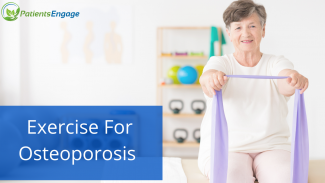
The right exercise for persons with osteoporosis helps in restoration of movement, maintenance of functional mobility, strength, and prevention of injury. Physiotherapist Neha Sethia shares a detailed approach to exercise that addresses these issues. Bookmark this.
Case study
A 62-year-old female came to the clinic with complain of nagging mid back pain for a month. She had difficulty while turning in the bed, sitting for more than an hour, and standing for more than half hour. On posture examination, she had a slight hunchback appearance. Tenderness was present in the vertebrae and the muscle around the area of pain. Patient was advised x ray of the spine which revealed a compression fracture of spine at D11 LEVEL (THORACIC SPINE). On further investigation as advised by the physician the patient was diagnosed with Osteoporosis.
हिंदी में पढ़ें: ऑस्टियोपोरोसिस के लिए सही व्यायाम
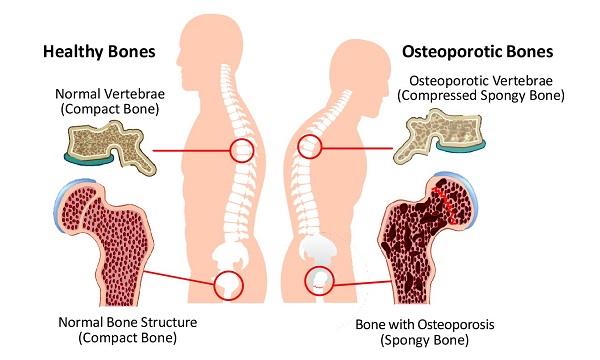
Osteoporosis literally means porous bone. It is often termed a silent disease as bone loss occurs without any symptoms, deteriorating the bone health. Osteopenia the term seen on the x ray report is also associated with osteoporosis. It characterized by low bone density although not as severe as osteoporosis. Fractures are often the first sign of osteoporosis.
Signs and Symptoms of Osteoporosis:
- More common in female than male.
- Back pain which can be episodic, and the site of pain is usually the upper and mid-back region.
- Stopped posture/ appearance of Hunchback /Dowager hump
- Compression fracture of the spine
- Loss of height
- Affected areas are commonly the spine, hip, and wrists
With the increasing elderly population, there is a need for educating and creating awareness regarding osteoporosis. A fragile bone can break easily resulting in decreased functional ability for the elderly. Early screening, correct eating habits, medication, and exercises play a significant role as a treatment intervention for osteoporosis.
Early Screening must be done for the high risk individuals such as:
- Post-menopausal women
- Females above the age of 65
- Anyone with a Hereditary history of osteoporosis
- Males above the age of 70
Diagnostic Tests performed for osteoporosis will include the following.
1. Laboratory blood test for initial investigation:
- Bone profile – serum calcium, phosphate, and albumin
- Alkaline phosphate
- Vitamin D3
- ESR
2. Bone mineral density test (BMD):
This test helps in identifying if the individual has normal bone density, low bone density (Osteopenia) or Osteoporosis. The test results are reported using the T-score.
|
Normal T-score range |
+1 to -1 |
|
Low bone density (Osteopenia) score range |
-1 to -2.5 |
|
Osteoporosis score range |
-2.5 and below |
Dietary supplements and Medications:
- Calcium and vitamin D are excellent building blocks for the prevention of osteoporosis.
- Foods rich in calcium include dairy and non-diary sources such cheese, yogurt, milk, leafy green vegetables like spinach, legumes, soybean, and sea food.
- Vitamin D is essential for the absorption of calcium in the body.
- Vitamin D can be obtained by food sources like sea food, supplements prescribed by the doctor and a good amount of sun exposure. Going for early morning walks for at least a half hour is a great way to get some sun.
- Osteoporosis Medications have shown a significant progress in increasing bone density, and reducing the incidence of fractures. Consult your physician regarding the medication course required on an individual basis for osteoporosis.
Exercise Management:
Physiotherapy is the field which studies the science of movement. The exercise plan provided by the physiotherapist helps in restoration of movement, maintenance of functional mobility, strength, and prevention of injury.
Role of physiotherapy in osteoporosis
- To design an exercise management program for the individual based on the current functional level, mobility, and strength of the individual. For example, an individual diagnosed with osteopenia will be given an exercise program which includes both lying down and standing movement. A case of severe osteoporosis on the other hand will require initially lying (bed based) gentle movements and walking. An individual with reduce mobility, wheelchair bound will require a movement-based program in lying and sitting.
- To teach the correct posture while sitting, standing and sleeping.
- To educate about the exercise or movements which are contraindicated in osteoporosis.
- To restore mobility, strength, and flexibility of the muscle so the individual continues his or her functional movements.
Exercise program includes the following:
- Weight -bearing exercises like walking, low impact aerobics, stair climbing. Walking can be done with a combination of normal and brisk pace or adding weight around the ankle if possible, to turn it into a muscle strength training activity.
- Flexibility and Strengthening exercise using low resistance weights and bands. Strengthening especially the spinal muscle is especially important to maintain correct posture.
- Posture control exercises to maintain spine and balance exercise to prevent falls. For postural maintenance, patient is usually instructed to sit tall with back support to prevent the back from slouching.
- Balance exercise in sitting like marching, walking sideways, holding the railing and heel-toe raise with railing support are encouraged. Exercises in standing help in balance and in maintaining the spine erect.
NOTE:
Always perform standing exercise holding a steady surface for support like railing or table. Do not hold onto a chair or any lighter surface as it can topple resulting in a fall!
For individuals with painful knee, back or poor balance the below exercise can be performed with supervision but only once it has been approved the physiotherapist.
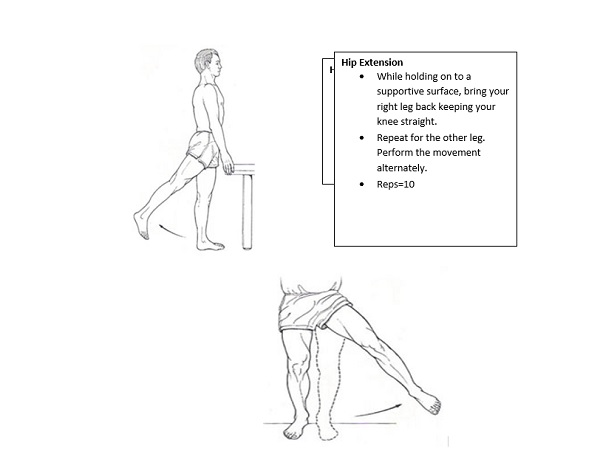

- Flexibility exercise should be performed at least 2-3 times a week to maintain the mobility of the joints. Below are few examples of the lower body, back and upper body stretch

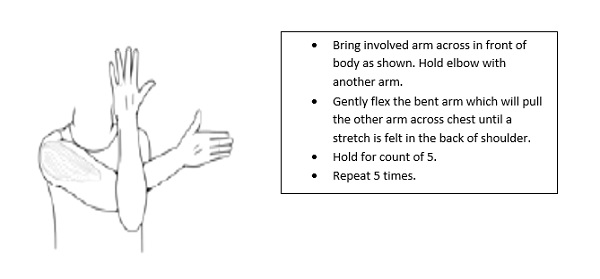
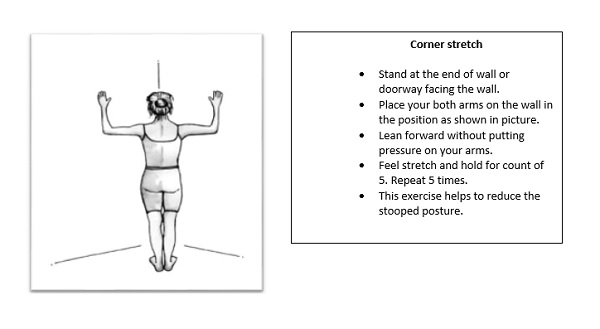
- Strengthening exercise are performed using low resistance weights and bands. Strengthening especially the spinal muscle is especially important to maintain correct posture.
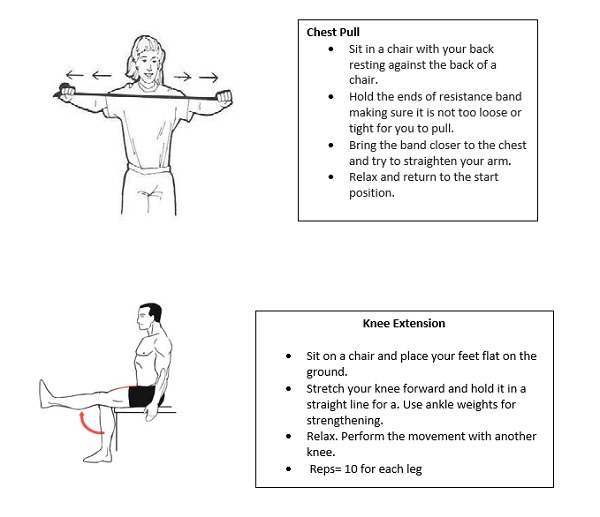
- Posture control exercises to maintain spine and balance exercise to prevent fall. Balance exercise in sitting like marching, walking sideways, holding the railing and heel-toe raise with railing support are encouraged. Exercises in standing help in balance and in maintaining the spine erect.
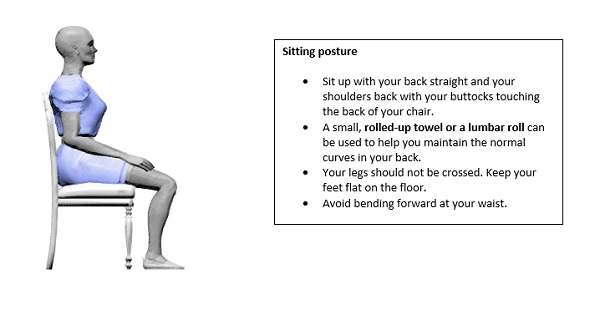
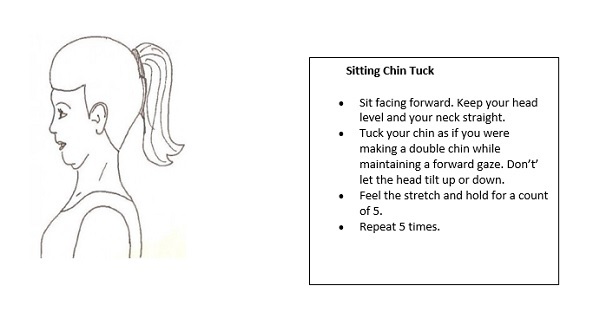

In the case study mentioned above the patient was referred to physiotherapy for pain management, posture correction and strengthening program for the back. The patient was also advised brace to support the site of the fracture area.
Dos and Don’ts while performing an exercise.
- Wear sensible shoes with non-skid soles while walking to avoid tripping /falling.
- Regular check-up for eyesight as poor eyesight or incorrect eyeglass can result in falls.
- Make sure to perform the exercise in a well-lit up and clutter-free area.
- If your medication is making you dizzy or weak, inform your doctor before starting the exercise program.
- Avoid excessive forward bending, twisting or high impact movement like jumping, jogging, skipping, which can endanger the bone.
- Yoga Tai-chi, Pilates and Dancing also helps to improve and maintain mobility, strength, and flexibility. However, certain positions are contraindicated such as twisting, excessive forward bending and high impact exercises. Individuals should consult a physiotherapist to learn about which exercises are appropriate for them.
Lifestyle Risk and modification:
Individuals with sedentary /inactive lifestyle, diet low in calcium, heavy smoker and excessive alcohol consumption are at high risk for osteoporosis. It essential to maintain an active lifestyle and have a well-balanced meal like going for walk every day for half hour.
References:
- Image 1 - www.hudsonvalleyscoliosis.com/scoliosis-and-osteoporosis
- Image 2 - www.physio-pedia.com/Osteoporosis
- www.caminoretirement.com
- http://www.pt-helper.com/images/
- www.cardiacrehab.50webs.com
- What causes falls in the elderly? How can I prevent a fall? AM FAM Physician.2000 Apr 1;61(7):2173-2174
- www.nof.org






